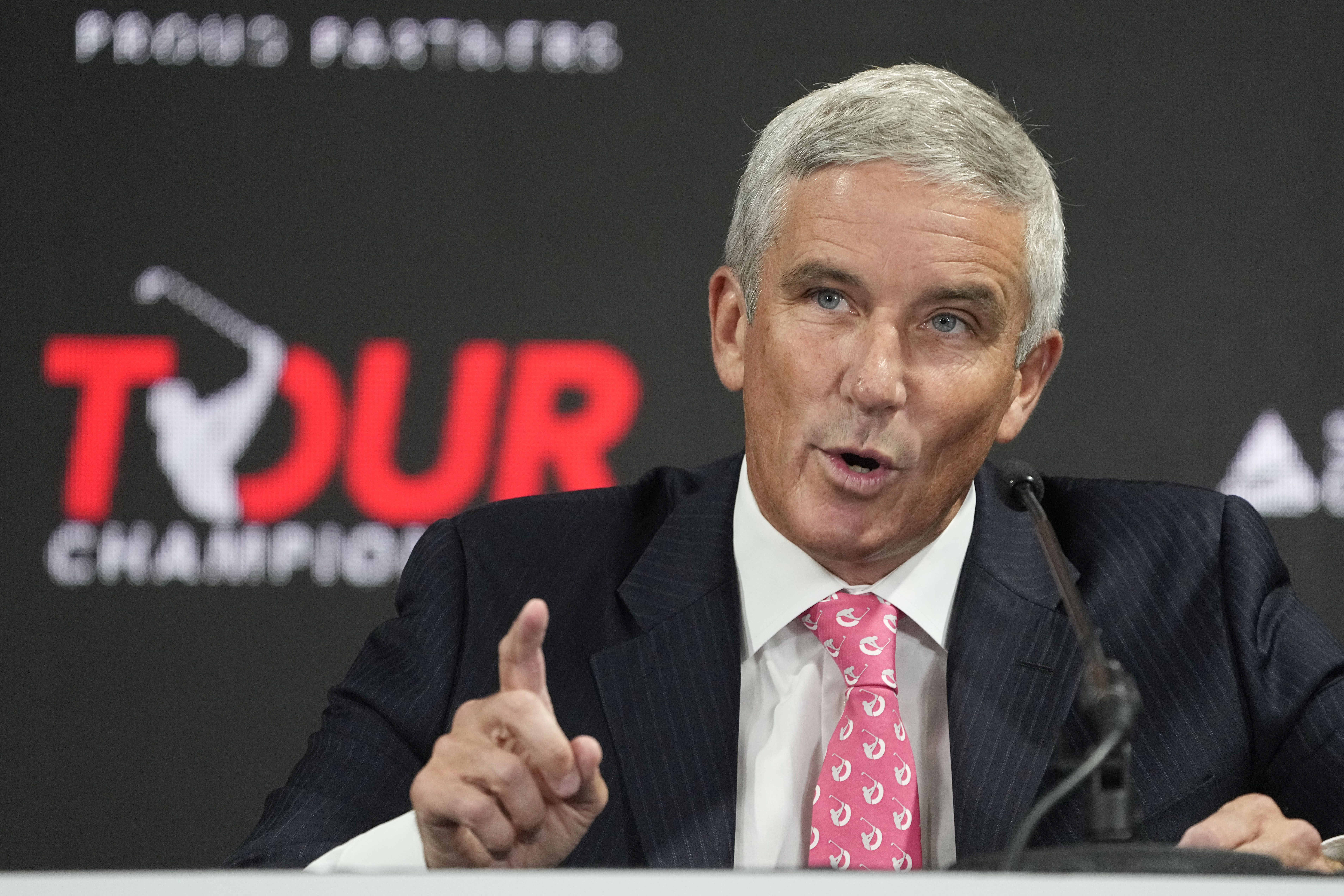Reasons for thankfulness are scarce on the PGA Tour in the waning weeks of 2023, seasonal sentiment and Tiger’s impending return notwithstanding. Even feel-good winners like Erik Van Rooyen and Camilo Villegas furnished us with only a brief respite from the discord and distrust shadowing professional golf as it teeters toward a new dispensation, the structure and funding of which remains undetermined.
As the most tumultuous year in the Tour’s history draws to a close (if not a resolution), the portico principles that supported decades of the organization’s marketing are quickly crumbling. Like the ideals of comity and charity, for so long neatly packaged in a mantra — ‘These Guys Are Good’ — that was repeated with a fervor worthy of the Beijing politburo. Comity has been undermined by griping — about fellow players, about executives at HQ, about the media — while the unrelenting chatter about money encourages a perception that too many Tour members think charity ends where it should begin: at home.
The most enduring and ruinous narrative peddled by the Tour was that every event mattered equally, as did every man in a member-led organization. It was a sustainable storyline only as long as everyone on the boat was aligned to row in the same direction. To the extent that they ever were, they are no longer. A clear caste system now exists on the tournament schedule and the voices carrying most weight belong to a distinct minority of the membership.
Major sports leagues, like motion pictures, are powered by superstars but staffed by extras. On the PGA Tour, there’s a rapidly expanding schism between cameo actors and leading men, between those who contribute (and often steal) scenes, and those who drive box office. Players at the apex of the food chain think the Tour is overly concerned with feeding the rank and file, creating too many events that pay too much for too little, while journeymen believe themselves squeezed by management’s desire to indulge the demands of the elite. It’s politics, with a smidgen more civility.

Lanto Griffin hits his tee shot on the eighth hole during round two of the Shriners Children’s Open at TPC Summerlin on October 08, 2021 in Las Vegas, Nevada. (Photo by Alex Goodlett/Getty Images)
As the Tour moves to fundamentally reshape how it does business, the divide has never been more glaring. Consider Lanto Griffin’s comments earlier this week when Rory McIlroy resigned from the Policy Board. “Rory was great because he was approachable by everybody, but at the same time he was bought by the Tour,” Griffin said. “The head of the board has the same sponsors as the Tour and the Players, there’s influence there — I’m talking Workday, I can’t remember all of them, Golfpass. The guy who’s running the board is being paid by all the title sponsors, it’s a little sketchy to me.”
The errors of fact in Griffin’s statement rival the frequency of bogeys on his scorecards, but what’s noteworthy here is that McIlroy’s success and marketability has been weaponized against him as cause for suspicion, as evidence that he’s compromised. It won’t be the last time we hear this specious claim leveled against a prominent star. A consequence of players taking control of board decisions is that they are now deemed blameworthy by any of the Tour’s steerage passengers who think those on the upper deck are leaning on the tiller for selfish reasons. That divisiveness is likely to increase since the time is nearing for decisions that will upset many who feel their concerns are being ignored, their grievances not redressed, their future employment not assured.
About the only thing uniting locker room factions is a mutual distrust of Tour leadership. Much of that owes to June 6, when Jay Monahan squandered every atom of trust and goodwill he had accumulated over six years as commissioner. It is exacerbated by the slow pace of progress with the Framework Agreement negotiations — “deliberate,” to use Monahan’s word in a memo to players — and the absence of concrete detail. There may be progress soon on the private equity component — to the inevitable disgruntlement of some — but any Saudi involvement faces potential regulatory scrutiny, a time-consuming process. And whatever the future landscape of the Tour and the broader men’s professional game, the steps to get there will be painstaking. The Tour has roughly $6 billion in media rights revenue guaranteed through 2030, and any substantive alterations to the product it delivers before then could imperil that cash. Which leaves plenty of time for grievances to fester.
This painful reckoning for the PGA Tour has been a long time coming, a winter of discontent with many seasons yet to run. It’s all enough to make one give thanks to Woods (perè et fils) for the promise of a few days in which to appreciate things on the other side of the ropes.

